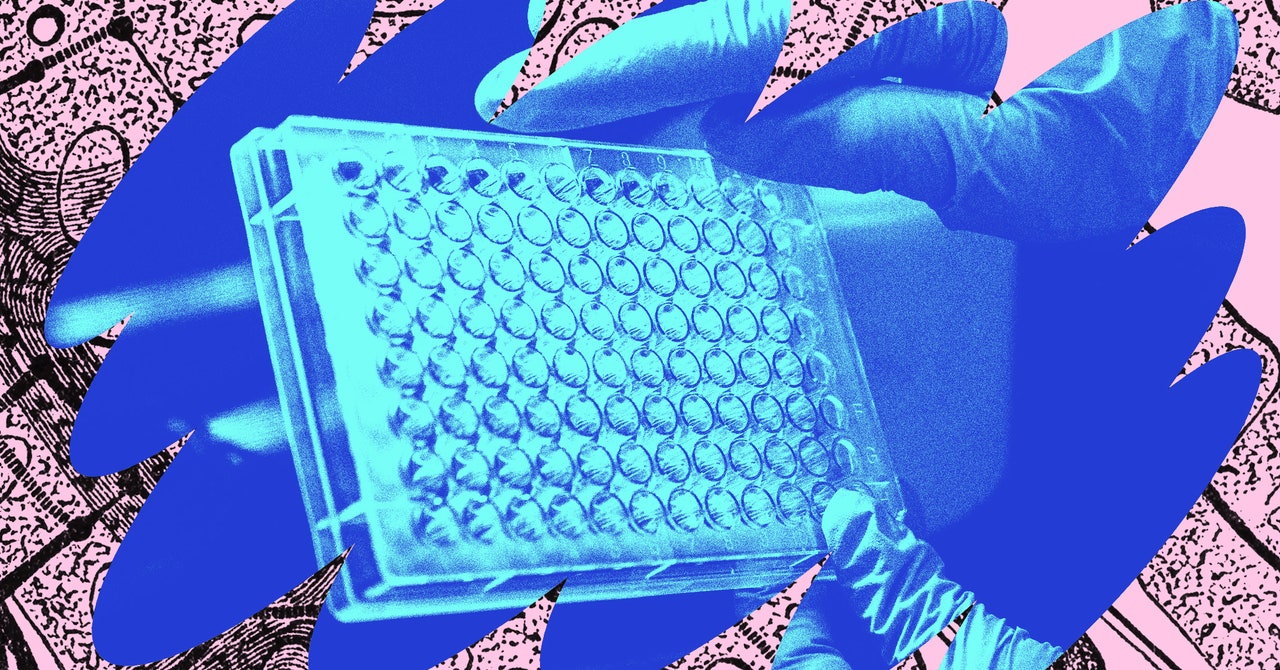
Ella Balasa was 26 when she realized the routine medical treatments that sustained her were no longer working. The slender lab assistant had lived since childhood with the side effects of cystic fibrosis, an inherited disease that turns mucus in the lungs and other organs into a thick, sticky goo that gives pathogens a place to grow. To keep infections under control, she followed a regimen of swallowing and inhaling antibiotics—but by the beginning of 2019, an antibiotic-resistant bacterium lodged in her lungs was making her sicker than she had ever been.
Balasa’s lung function was down to 18 percent. She was feverish and too feeble to lift her arms over her head. Even weeks of intravenous colistin, a brutal last-resort antibiotic, made no dent. With nothing to lose, she asked a lab at Yale University whether she could volunteer to receive the organisms they were researching: viruses that attack bacteria, known as bacteriophages.
That January, Balasa trundled to New Haven from her home in Virginia, burdened with both an oxygen concentrator and doubts over whether the treatment might work. Every day for a week, she breathed in a mist of viruses that biologist Benjamin Chan, scientific director at Yale’s Center for Phage Biology and Therapy, had isolated for their ability to attack Pseudomonas aeruginosa, the multi-drug-resistant bug clogging Balasa’s lungs.
And it worked. The viruses penetrated the goo, attacked the bacteria, and killed a portion of them; the rest of the bacteria weakened enough that antibiotics could knock them out. Balasa’s body cleared the life-threatening infection faster than ever before.
Today, Balasa is 30; she continues to suffer from cystic fibrosis, but two more rounds of phages plus a change in medications have kept her from reliving the crisis that phage treatment quashed. Now she consults with companies developing cystic fibrosis drugs and works to bring visibility to new treatments, including phages. “I view them very much as a novel way of treating infections,” she says. “If I had not been able to access phages, who knows what my life would be at this point?”
There’s an asterisk to her success: Phages are unapproved drugs, not just in the United States, but in the United Kingdom and Western Europe, too. No company makes them for commercial sale in those countries, and hospitals and pharmacies don’t stock them. To administer them, physicians must seek a compassionate-use authorization from a government regulator—in Balasa’s case, the US Food and Drug Administration—showing their patients have no other options.
That process is inefficient and inherently unfair, since it limits availability to people who are lucky and persistent and whose doctors have strong professional networks. Still, journal articles and accounts by investigators suggest that well over 100 patients in the US have received emergency phage treatments, mostly unpublicized. Researchers are confident that if phages were legally available, more lives could be saved.
And, at last, that could be the case. In 2021, the National Institutes of Health gave 12 US institutions $2.5 million to research phage therapies. Last year, the NIH launched its first federally funded clinical trial of the beneficial viruses, backing 16 centers to test safety and possible dosing levels against Pseudomonas, the pathogen that sickened Balasa. Other academic centers and private companies have launched roughly 20 trials in the US and about 30 in the UK and Europe. And in January, a committee of the UK Parliament launched an inquiry into whether phages could be brought to market there.


